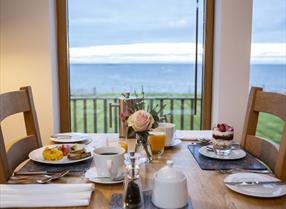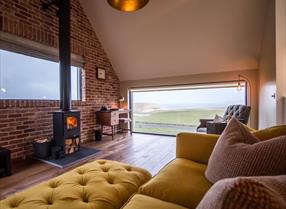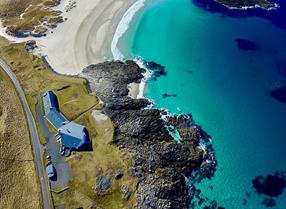It might seem surprising today, but for nearly a century - from around 1850 until the outbreak of the Second World War - women were the driving force behind the Hebrides' herring industry. At its peak, up to 3,000 island women worked as "Herring Girls," playing a vital role in the fishing trade. Their contribution is commemorated by two statues at Stornoway’s harbour, a lasting tribute to their hard work and resilience.
These women didn’t just work locally; they followed the fish throughout the summer season, travelling as far as Hull, Lerwick, and beyond. The job was demanding and physically tough. While it paid relatively well, it left them exposed to harsh weather conditions. To protect their hands from the salt and cold, they improvised bandages from cotton and packaging, but cuts and blisters were inevitable.
Herring Girls worked in teams of three - two would gut and process the fish, while the third, usually the tallest, packed them into barrels. They were paid by piecework, meaning they could spend long hours on the docks waiting for fish that sometimes never arrived. Before they could even earn full wages, they had to fund their own apprenticeships, working on reduced pay as cùibhlearan or coilers.
Despite the challenges, the work had its social side. When the fish were slow to arrive, the women would chat, knit, or even sing to pass the time. If they were stationed in an English port, they often arranged ceilidhs on Saturdays, bringing a piece of home with them wherever they travelled.
Stornoway’s Herring Girls earned a strong reputation for their skill, and the industry’s wealth helped shape the town into what it is today. At its height, Stornoway was one of the most important herring ports in Britain—if not Europe—with up to 1,000 boats crowding the harbour in summer, swelling the town’s population threefold.
The industry’s golden years were just before the First World War, when herring was exported to markets in Germany, Russia, and the Baltics. But the war severed these trade routes, and although the industry partially recovered in peacetime, global competition and mechanisation took their toll. By the time the Second World War arrived, the herring boom in Stornoway had come to an end.
The legacy of the Herring Girls, however, remains woven into the history of the Hebrides - a testament to the resilience, skill, and spirit of the women who helped sustain an industry that once shaped an entire way of life.













Comments
Comments are disabled for this post.